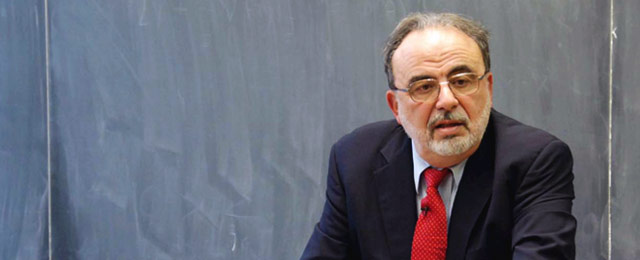Online courses directory (215)
Learn from a veteran TV comedy writer how to write professional sitcom scripts and how to break into show business.
This class offers a foundation in the visual art practice and its critical analysis for beginning architecture students. Emphasis is on long-range artistic development and its analogies to architectural thinking and practice. Students will learn to communicate ideas and experiences through various two-dimensional, and three-dimensional, and time-based media, including installations, performance and video. Lectures, visiting artist presentations, field trips, and readings supplement studio practice.
This course offers an introduction to the history, theory, and construction of basic structural systems as well as an introduction to energy issues in buildings. It emphasizes basic systematic and elemental behavior, principles of structural behavior, and analysis of individual structural elements and strategies for load carrying. The course also introduces fundamental energy topics including thermodynamics, psychrometrics, and comfort. It is a required class for M. Arch. students.
This course addresses advanced structures, exterior envelopes and contemporary production technologies. It continues the exploration of structural elements and systems, and expands to include more complex determinate, indeterminate, long-span and high-rise systems. It covers topics such as reinforced concrete, steel and engineered wood design, and provides an introduction to tensile systems. Lectures also address the contemporary exterior envelope with an emphasis on their performance attributes and advanced manufacturing technologies. This course is required of MArch students.
In this class, concepts of building technology and experimental methods are studied, in class and in lab assignments. Projects vary yearly and have included design and testing of strategies for daylighting, passive heating and cooling, and improved indoor air quality via natural ventilation. Experimental methods focus on measurement and analysis of thermally driven and wind-driven airflows, lighting intensity and glare, and heat flow and thermal storage. Experiments are conducted at model and full scale and are often motivated by ongoing field work in developing countries.
This course serves as an introduction to urban form and design, focusing on the physical, historical, and social form of cities. Selected cities are analyzed, drawn, and compared, to develop a working understanding of urban and architectural form. The development of map making and urban representation is discussed, and use of the computer is required. A special focus is placed on the historical development of the selected cities, especially mid-nineteenth and mid-twentieth century periods of expansion. Readings focus on urban design theory in the twentieth century and will be discussed during a weekly seminar on them. This is a methods class for S.M.Arch.S. students in Architecture and Urbanism.
The course facilitates a close reading of Don Quixote in the artistic and historical context of renaissance and baroque Spain. Students are also expected to read four of Cervantes' Exemplary Stories, Cervantes' Don Quixote: A Casebook, and J.H. Elliott's Imperial Spain. Cervantes' work will be discussed in relation to paintings by Velázquez. The question of why Don Quixote is read today will be addressed throughout the course. Students are expected to know the book, the background readings and the materials covered in the lectures and class discussions.
Do you want to think about ways to help solve New Orleans' problems? CityScope is a project-based introduction to the contemporary city. "Problem solving in complex (urban) environments" is different than "solving complex problems." As a member of a team, you will learn to assess scenarios for the purpose of formulating social, economic and design strategies to provide humane and sustainable solutions. A visit to New Orleans is planned for spring break 2007.
Graphic designers, artists, photographers and all those involved in the visual arts need an accurate understanding of colour theory. This free online course from ALISON presents aspects of colour and light perception such as hue, lightness and chroma, brightness and saturation, visual perception of colour, mixing paints, and additive and subtractive colour mixing. The comprehensive text is accompanied by interactive graphics that further explain the concepts. This course is ideal for any learner who practices the visual arts, either professionally or as a hobby, and who wants to greatly enhance their knowledge and understanding of colour theory.
Comic books have arrived! "Comic Books and Graphic Novels" presents a survey of the Anglo-American comic book canon and of the major graphic novels in circulation in the United States today. Its governing question is simple: by what terms can we discuss comic books as literary art? In pursuit of that question it develops a theory of literary reading and time itself. Visit us at www.facebook.com/UCBComics or bit.ly/project10-4 to see some student-created comics from 2013!
This class explores composition and arrangement for the large jazz ensemble from 1920s foundations to current postmodern practice. Consideration given to a variety of styles and to the interaction of improvisation and composition. Study of works by Basie, Ellington, Evans, Gillespie, Golson, Mingus, Morris, Nelson, Williams, and others. Open rehearsals, workshops, and performances of student compositions by the MIT Festival Jazz Ensemble and the Aardvark Jazz Orchestra.






















